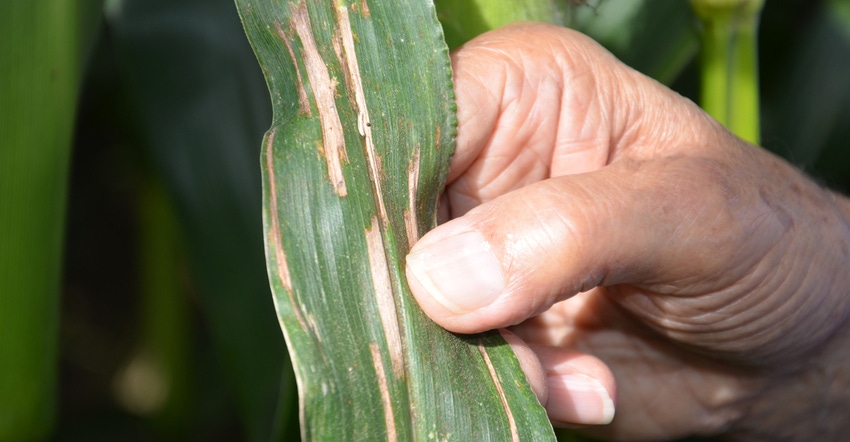June 20, 2022

The 2022 corn planting season started much later than desirable. Early spring was wet and cold. However, our Corn Watch field got planted in a timely fashion on May 11. Last year, the Corn Watch ’21 field was planted on April 25. Then it turned cold and wet for two weeks, which delayed emergence for about 50% of the plants. The field still yielded 205 bushels per acre. This year, most of the plants in the Corn Watch ’22 field emerged seven days after planting. Ideal temperature and moisture at planting can work like a miracle!
After good, uniform seedling emergence and stand establishment, the most important periods for corn plants are successful pollination and grain fill. That’s when corn plants start making money.
Pollination
If pollination of some ovules wasn’t successful due to stress, it could result in incomplete kernel set. Certain insects like Japanese beetles or corn rootworm beetles, which feed on pollen that falls on silks, can interfere in the pollination process and reduce kernel set. Heat and drought stress can delay silk emergence and cause pollination problems. Late-emerging silks may not have any pollen left in the field for fertilization.
The first silks to emerge come from the butt of the ear, and the last silks emerge from the tip of the ear. So, the kernels near the tip of the ear are more prone to be left out of the pollination process. That’s why you might consider planting your cornfields with hybrid pairs in alternating strips that are two to three days apart in their pollen-shed dates.
When pairing hybrids in various fields, try to use two hybrids from the same seed company, if possible, to make sure they differ in days to pollen shed. Sometimes hybrids from different companies with the same relative maturity rating may be similar in days to pollen shed.
Grain fill
For the grain fill period, corn plants need 50 to 60 days after pollination finishes to reach black layer, or physiological maturity, depending on the relative maturity of the hybrid and temperatures prevalent in the area. This is the payoff time for the corn plant, when the primary focus is to fully develop kernels.
Corn likes cooler temperatures and sufficient water and nutrients during this period for optimum yields. Any stresses during grain fill will have a negative effect on yield. It’s critical to have no higher-than-average nighttime temperatures during this period. Above-average overnight temps can be a stress that docks yield.
If there is severe heat, a lack of moisture or nutrients, or disease stress during grain fill, plants may start to cannibalize their stalks and leaves to fulfill the growing needs of their progeny. Plants start to abort the youngest kernels, causing tip dieback, so the remaining kernels can fully develop. Black layer occurs at 32% to 35% grain moisture, depending on the hybrid. Stress before this period can cause kernel abortion and light test weight. Favorable weather during the grain fill period is essential for maximizing yields.
Nanda is director of genetics for Seed Genetics Direct, Jeffersonville, Ohio. Email [email protected] or call him at 317-910-9876. Please leave a message.
About the Author(s)
You May Also Like






